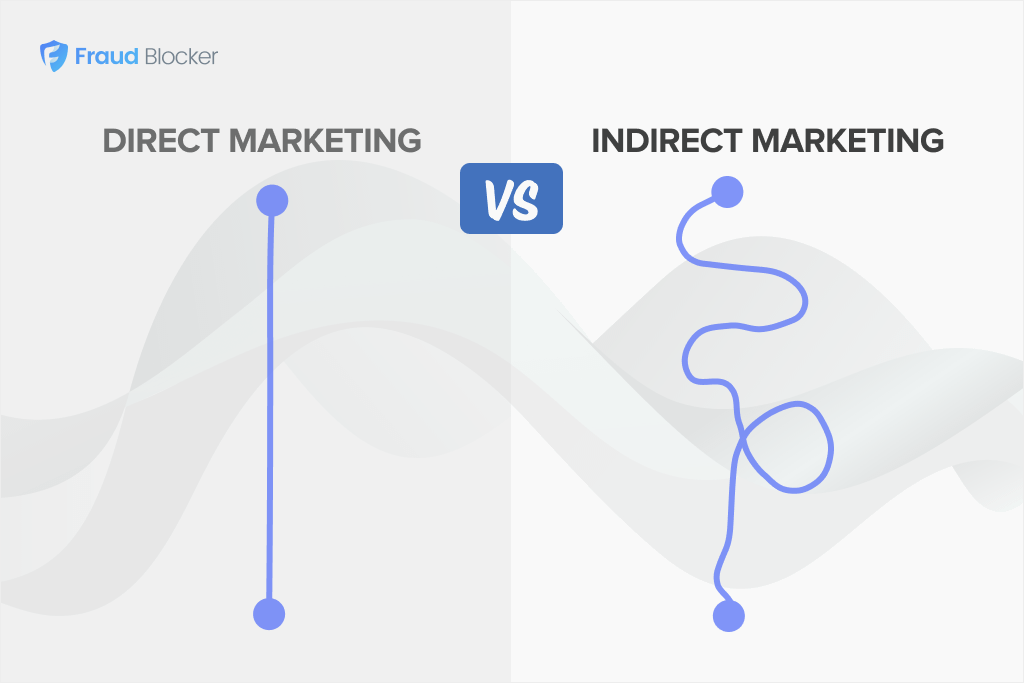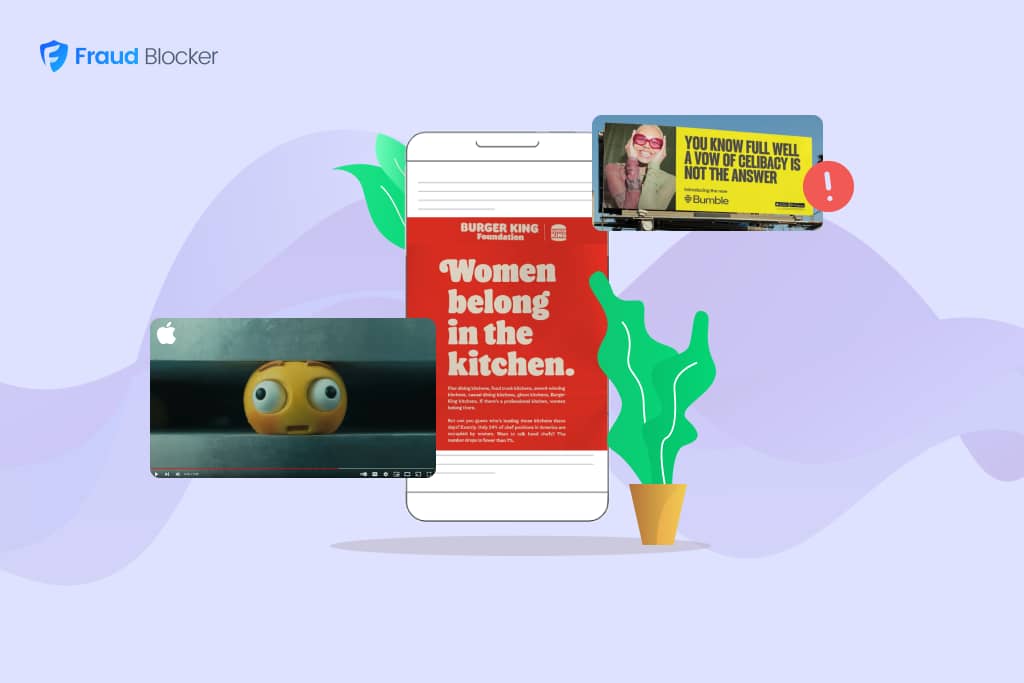
NEW New feature: Verify & block fake emails

We improve your ad performance by blocking click fraud and fake emails

Click fraud is costing advertisers billions in loses. Learn more here.

Click fraud is costing advertisers billions in loses. Learn more here.

Great advertising – when done well – can inspire, delight, and be a unifying force for good.
However, when done poorly, they can create an immense backlash from customers.
We looked at hundreds of ads to find only those that truly “missed the mark”. By examining these infamous ads, you can learn what not to do to avoid backlash and damage to your brand. This article explores some of the most talked-about ads across various marketing channels including television, online video such as YouTube, billboard signage, Instagram and social media posts, print and more.
Apple is known for their inspiring, innovative ads…but this was not one of those ads.
Their recent ad, titled “Crush”, showed musical instruments, beautiful paints, sculptures, and other beloved pop culture references being pressed down and, well, crushed – into an iPad.
The ad intended to highlight the iPad Pro’s design by metaphorically representing how it condenses various creative tools and experiences into one product. Instead, it conjured up imagery of “destruction of human experience”, and showed that even the biggest, most creative and innovative companies in the world can miss the mark.
Update (June 2025): Apple has removed the ad from their YouTube channel so we’ve replaced it with the one above.
Many Apple fans and critics felt that the ad was tone-deaf and did not align with the brand’s usually positive and uplifting message. Even celebrities noticed and commented: actor Hugh Grant retweeted the ad and wrote “The destruction of the human experience. Courtesy of Silicon Valley.”
Lesson: Make sure the metaphors and imagery in your ads align with your brand’s values, and consider how they’ll be received by your audience.
Swatch, a Swiss watch brand, promoted its ESSENTIALS collection with an image of an Asian male model pulling the corners of his eyes, a gesture widely recognized as a racist stereotype.
After intense backlash on social platforms in Asia, and specifically China (and calls to boycott Swatch Group brands), Swatch removed the campaign worldwide and apologized in Chinese and English on Weibo and Instagram.
Some analysts asked: how could this imagery clear internal review? Others argued the provocation may have been intentional, using a strategy of “controversy as attention”.
Whether it was intentional or not, it has an impact: China, Hong Kong and Macau account for roughly 27% of Swatch Group sales, and the watch industry is already under pressure from weaker demand (Swatch group revenue was down 14% in 2024 vs. 2023).
Lesson: Provoking ad campaigns are not a pass for stereotypes. If you serve a global audience, build a cultural-risk review into your launch strategy. This could be as simple as a final check with in-market teammates for insensitive imagery and messaging.
American Eagle’s late-July denim campaign leaned on a “genes/jeans” pun that critics said flirted with themes of eugenics and “catered to the male gaze”, igniting a broader culture-war debate.
Rather than apologize, the company doubled down on their message, stating on Instagram that the campaign “…is and always was about the jeans. Her jeans. Her story.”
The controversy went even more viral after receiving praise from President Trump on Aug. 4, and shares of AEO jumped 16% on that day.
In November 2024, Jaguar launched its “Copy Nothing” rebranding campaign in an effort to redefine its image as the company transitions to an all-electric lineup. The campaign’s centerpiece was a promotional video featuring diverse models in vibrant clothing, confidently posing against a surreal, pink-hued landscape.
The backlash was swift and the ad drew sharp criticism across the internet. Comments included “This is how companies fail” and “Awful, awful ad. Is this supposed to rescue your tarnished brand? The ad also lacked any mention of Jaguar’s new vehicles sparking Elon Musk to say “Do you make cars?”
Some critics felt that the video’s avant-garde styling, which included cross-dressing models in flamboyant attire, leaned on a visual trend that felt more recycled than groundbreaking.
Jaguar also rebranded their iconic leaping jaguar logo, a design staple since the 1950s, with a minimalist geometric font. While some applauded the bold direction, many long-time fans expressed disappointment, seeing it as a disregard for the brand’s rich history.
Lesson: When launching on a rebrand, balance innovation with respect for your heritage and customer base. A campaign should honor loyal fans while appealing to new audiences, avoiding choices that could alienate either group.
Update (July 2025): Jaguar experienced a dramatic 97.5% drop in European sales following a controversial rebranding effort, highlighted by an advertising campaign featuring men in skirts to announce its shift toward an all-electric lineup. However, these electric vehicles have yet to reach dealerships.
Jaguar registered only 49 vehicles in Europe in April, a stark decline from the 1,961 vehicles registered in the same month last year. Overall sales from January through April fell by 75.1%, totaling just 2,665 vehicles sold across Europe.

Bud Light’s partnership with transgender influencer Dylan Mulvaney in April 2023 sparked intense controversy and backlash.
The brand sent Mulvaney personalized cans featuring her face to celebrate her “365 Days of Girlhood” series, which she shared on social media during March Madness.
The collaboration aimed to promote inclusivity and reach a younger, more diverse audience, but it led to significant backlash from conservative consumers and public figures, resulting in calls for boycotts and a sharp decline in sales.
Bud Light sales plunged almost immediately, and the brand lost its place as America’s top-selling beer to Modelo Especial.
Anheuser-Busch (Bud Light’s parent company) initially stood by the partnership, but later distanced itself from the campaign. This controversy highlights the challenges of navigating social issues in marketing and the potential risks of alienating your core customer base.
Lesson: When engaging in social causes or partnering with influencers, carefully consider your brand’s core audience and potential reactions. Make sure that any collaborations align with your long-term brand strategy and values.
(Watch the full Dylan Mulvaney’s Instagram post here.)
Pepsi’s 2017 ad featuring Kendall Jenner aimed to promote unity and peace. However, it quickly became infamous for trivializing social justice movements.
The ad showed Jenner leaving a photo shoot to join a protest, ultimately resolving tensions by handing a can of Pepsi to a police officer, suggesting that a soft drink could solve deep-seated social and racial issues.
Lesson: Avoid oversimplifying complex social issues. Sensitivity and thorough understanding are crucial when addressing these topics in your ads. Also, using a celebrity is not always the answer – in this context, it did not feel authentic or resonate with the audience.
Peloton’s holiday ad featured a woman documenting her year-long fitness journey after receiving a Peloton bike from her husband.
The ad aimed to inspire by showcasing the benefits of using Peloton and the joy of giving a gift that could be transformative, but it was viewed as sexist and out of touch, and the woman looked legitimately scared in some frames, and critics suggested it promoted unhealthy relationships and body image issues.
In response to the backlash, Peloton stated, “Our holiday spot was created to celebrate that fitness and wellness journey. While we’re disappointed in how some have misinterpreted this commercial, we are encouraged by — and grateful for — the outpouring of support we’ve received from those who understand what we were trying to communicate.”
Lesson: Be sensitive to gender roles and body image perceptions in your advertising. Understand how your message might be perceived by different demographics. And if you are looking for ways to improve your messaging, here are 15 ad copy tips from marketing experts.
In response to the “Me Too” movement, Gillette launched a campaign addressing toxic masculinity and encouraging men to hold each other accountable. The ad featured various scenarios depicting bullying, harassment, and other behaviors typically associated with toxic masculinity, urging men to step up and be better.
While some praised the ad for its bold stance, others felt it was too accusatory and politically charged, leading to polarized opinions and significant backlash.
Lesson: While taking a stand can differentiate a brand, you need to consider your audience and anticipate potential reactions. Balance your message to avoid alienating segments of your customer base.
Bloomingdale’s holiday catalog featured an ad with the text, “Spike Your Best Friend’s Eggnog When They’re Not Looking”. It is difficult to understand what led to this campaign and messaging. The ad likely aimed to be playful and humorous, aligning with festive cheer and holiday mischievousness, but this ad was heavily criticized for seemingly promoting date rape culture, leading to widespread and harsh backlash.
Lesson: Always review your ad copy for unintended messages. What may seem like a harmless joke can be interpreted very differently and cause significant harm to your brand.
Bumble recently launched a series of billboards that seemed to poke fun and joke that abstinence and celibacy could be a long-term dating solution.
The campaign was met with immediate backlash, especially from women, who felt the messaging was shaming and offensive. Critics argued it trivialized important personal choices and experiences.
Lesson: Here is another example of a mistake repeated into the present day: consider the context of your company’s mission, the social climate you are in, and how your message might fit (or not fit) into the present moment.
Benetton’s “Unhate” campaign featured digitally manipulated images of world leaders kissing each other, including Barack Obama, Hu Jintao, Pope Benedict XVI, Angela Merkel, and many others. Imagine seeing this image 50 feet high on a billboard:
While the campaign drew significant attention, it was also criticized for being disrespectful and overly provocative. Many felt it crossed a line by manipulating the images of real individuals without their consent.
Lesson: Shock value can backfire and even alienate your customers. Make sure your imagery respects cultural and political sensitivities.
The negative reaction was swift and widespread, and Dove was forced to respond with an apology: “We deeply regret the offense caused by this ad. Our intention was to convey that Dove is for every woman, but we got it wrong.”
Lesson: Test your ads with diverse focus groups to catch potential insensitivities. Diversity in your marketing teams can also help avoid mistakes like these.
Similar to Dove, Nivea’s deodorant ad featured the slogan “White is purity.” The ad was intended to highlight the product’s purity and effectiveness, using the color white as a metaphor.
The slogan was perceived as racially insensitive, with critics arguing it seemed to promote white supremacy. Nivea quickly pulled the ad after receiving significant backlash.
Lesson: Avoid messaging that can be interpreted as racially or culturally insensitive. Context matters, and what works in one market may not be appropriate in another.
H&M was criticized for featuring a Black child wearing a hoodie with the text “Coolest Monkey in the Jungle.”
The ad was likely intended to be playful and trendy, fitting with H&M’s youthful branding, but was viewed as racially insensitive and led to widespread backlash, including boycotts and celebrity criticism.
Many felt it perpetuated harmful racial stereotypes. H&M issued a statement: “We apologize for offending people with this image. Our intent was not to create an insensitive or racially offensive ad.”
Lesson: Be vigilant about racial sensitivities in your advertising. What might seem like an innocent design can have severe implications if not carefully considered.
Nike’s campaign featuring Colin Kaepernick, known for his protests against racial injustice, sparked significant controversy. It aimed to align Nike with social justice causes, leveraging Kaepernick’s polarizing figure to make a bold statement.
Nike stood by their decision and released this statement: “We believe in the power of sport to move the world forward and support the right of athletes to advocate for what they believe in.”
While the campaign resonated with many who supported Kaepernick’s stance, it also led to boycotts and public backlash from those opposed to his protests.
Lesson: Align your brand with causes that reflect your values and be prepared for divided opinions. Authenticity is crucial, but so is understanding the potential impact on your customer base.
On International Women’s Day 2021, Burger King UK tweeted “Women belong in the kitchen” to promote a culinary scholarship for female chefs.
The tweet was intended to highlight gender disparity in the culinary industry, but the provocative phrasing completely overshadowed the message, leading to immediate outcry and accusations of sexism.
Lesson: There are holidays or special occasions that can serve as opportunities for great “marketing moments” for your brand. During these times, you need to be timely – but also tactful and considerate. Craft your messages carefully, especially on sensitive topics. Shock tactics can easily backfire and obscure your intended message.
Dolce & Gabbana released a series of ads in China showing a Chinese model struggling to eat Italian food with chopsticks.
The ads aimed to be humorous and highlight cultural fusion, but ended up perpetuating stereotypes and being culturally insensitive.
This led to a massive backlash and calls for boycotts in China. These ads were released ahead of their Shanghai fashion show, which was reportedly cancelled after this advertisement aired.
This led to a massive backlash and calls for boycotts in China. These ads were released ahead of their Shanghai fashion show, which was reportedly cancelled after this advertisement aired.
Lesson: Cultural sensitivity is critical in global marketing. Avoid stereotypes and ensure your ads respect the customs and norms of your target audience.
Airbnb sent out a seemingly fun, aspirational email until you account for the context in which it was sent: during Hurricane Harvey, a deadly hurricane causing significant damage, and widely considered one of the costliest in U.S. history ($155 billion in damages).
The email was intended to promote Airbnb’s unique stays with whimsical language about “floating worlds” and “staying above water.”
Lesson: Double-check (maybe triple-check!) your campaigns, and review in the context of the current social and economic climate. Consider how your ads will be perceived in the context of ongoing issues and events.
Read more: Most shocking AI fails by advertisers.
It is easy to critique these ads in hindsight, and these ads offer a wealth of lessons for marketers and creatives alike. Always consider the broader social and cultural implications of your campaigns, involve diverse perspectives in the creative process, and anticipate any potential fallout before your ads go live.
By learning from past controversial ads, you can create impactful, respectful, and effective ads that resonate positively with your audience.
About Fraud Blocker:
Screenshot of Fraud Blocker’s ad fraud protection software
Even the most thoughtfully crafted ads can fall short if they don’t reach the right audience—or worse, when you waste your ad spend on fraudulent clicks.
Click fraud not only drains your marketing budget but also can affect your analytics, making it harder to measure true campaign performance.
That’s where Fraud Blocker comes in. Our advanced click fraud prevention solution ensures your ads reach genuine users, maximizing ROI and protecting your brand from fraudulent activity.
Take control of your ad campaigns today: try Fraud Blocker’s 7-day free trial and see how much money we can save you.

ABOUT THE AUTHOR
Brandon Tome
Brandon is the co-founder and Chief Growth Officer at Fraud Blocker with 15+ years of performance marketing experience and $100M in direct ad spend management. He specializes in driving growth and maximizing ROAS across B2B SaaS, fintech, marketplaces and more.
Brandon is the co-founder and CGO at Fraud Blocker with 15+ years of performance marketing experience. He specializes in driving growth and maximizing ROAS across B2B SaaS, fintech, marketplaces and more.


